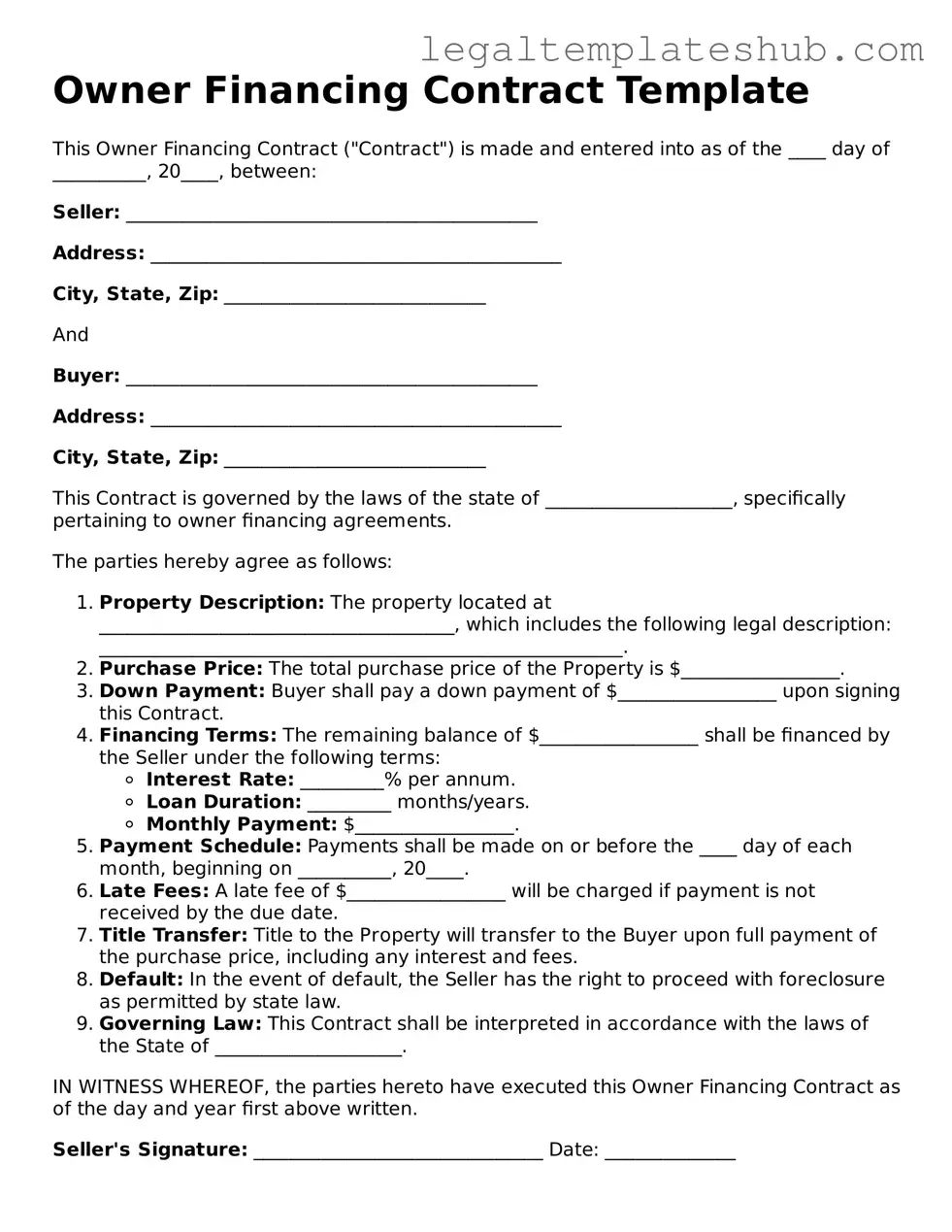Printable Owner Financing Contract Template
An Owner Financing Contract is a legal agreement between a property seller and buyer that allows the buyer to purchase the property directly from the seller, often without involving traditional mortgage lenders. This type of contract outlines the terms of the financing, including the purchase price, interest rate, and repayment schedule. Understanding this form is essential for both parties to ensure a smooth transaction and protect their interests.
To get started, fill out the Owner Financing Contract form by clicking the button below.
Access Editor
